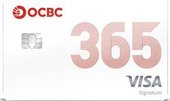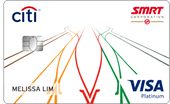A good way to get more value from your shopping is by using grocery credit cards, a class of credit card designed to give cardholders a variety of perks and rewards when they spend on groceries.
Who are grocery credit cards suitable for?
- Frequent supermarket shoppers. Anyone who spends regularly at supermarkets like NTUC Fairprice, Sheng Siong, and Cold Storage can benefit significantly from these credit cards.
- Self-caterers. If you prefer cooking at home over dining out, you can rack up points on staples such as rice, noodles, fruit, vegetables, wine, etc.
Grocery credit card features to compare
- Cashback rate. If the card offers cashback, how much do you stand to earn for grocery purchases?
- Reward points. How many reward points would you get for every dollar spent on groceries?
- Discounts at specific outlets. Certain cards offer specific discounts at partner supermarkets, which are no use if you don't shop there.
- Minimum monthly spend. Many cards require a certain monthly spending amount to unlock maximum benefits (and avoid forefeiture of rewards). Some cards have no minimum spending requirement.
- Annual fee. Always factor in the annual fee, as it affects the overall value you get from the card.
How to compare grocery credit cards
- Establish your spending habits. If you don't already know which supermarket you spend most at, find out by looking at your statements. There are credit cards with rewards for spending at NTUC Fairprice, Cold Storage, Sheng Siong, etc.
- What rewards do you want? Do you want cashback, reward points, or specific supermarket discounts?
- Compare cards. Filter down the cards that interest you and match your spending, then examine their perks side by side.
- Check for limits and conditions. If there is a minimum monthly spend requirement, can you comfortably meet it? If there are caps and tiers, work out how they would impact you.
- Consider the annual fee. Weigh the annual fee against the potential benefits to ascertain the card's value.
Pros and cons
Pros
- Cashback and rewards can result in significant savings over time.
- Some cards offer additional benefits like dining, travel, and entertainment rewards.
- You're spending on food anyway, so might as well earn something in return.
Cons
- Cards often have a minimum monthly spending requirement.
- Some cards have high annual fees.
- You might not find some of the additional benefits relevant or useful.


